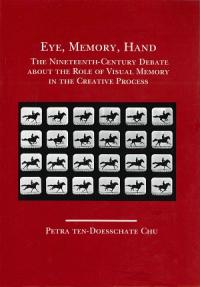Eye, Memory, Hand: The Nineteenth-Century Debate about the Role of Visual Memory in the Creative Process: The Sixteenth Horst Gerson Lecture, held on November 10, 2011
Synopsis
The Sixteenth Gerson Lecture held in memory of Horst Gerson (1907-1978) in the Aula of the University of Groningen on the 10th of November 2011.
In conclusion, the role that visual memory played in the creative process was an issue that preoccupied not only artists but also critics, philosophers, and psychologists in the second half of the nineteenth century. The lively discourse that the topic generated had much to do with its complexity, even its apparent ambiguity. While some saw a well-trained memory as an aid to examine and record reality, others saw it as a hindrance to close and unbiased observation. While memory was seen by some as a source of imagination, others saw it as a cause of schematization. While some advocated its synthesizing power, others saw this same power as a source of impoverishment of art. Depending on what aspect of memory was foregrounded, its use was strongly encouraged or discouraged. It is clear that the debate on the benefits of the application of visual memory to artmaking was intricately linked to another important debate that took place at the end of the nineteenth century, one about the relative value of naturalism and abstraction. Once that debate was, in some sense, "won" in the early twentieth century by those who favored abstraction, the nineteenth-century discourse on memory lost much of its relevance. At the same time, the way in which memory was understood was radically changed by Sigmund Freud, who added a new twist by the introduction of the unconscious- an area of the mind where unwanted memories were stashed away, difficult to access but not without the possibility or retrieval. It is this aspect of memory that came to fascinate the Surrealists, who placed it at the center of their creative process. But that is an entire new chapter in the relation between art, memory, and hand, which is outside the purview of this paper.
Downloads
Total downloads: 196

Downloads
Published
Series
Categories
License

This work is licensed under a Creative Commons Attribution-NonCommercial-NoDerivatives 4.0 International License.



